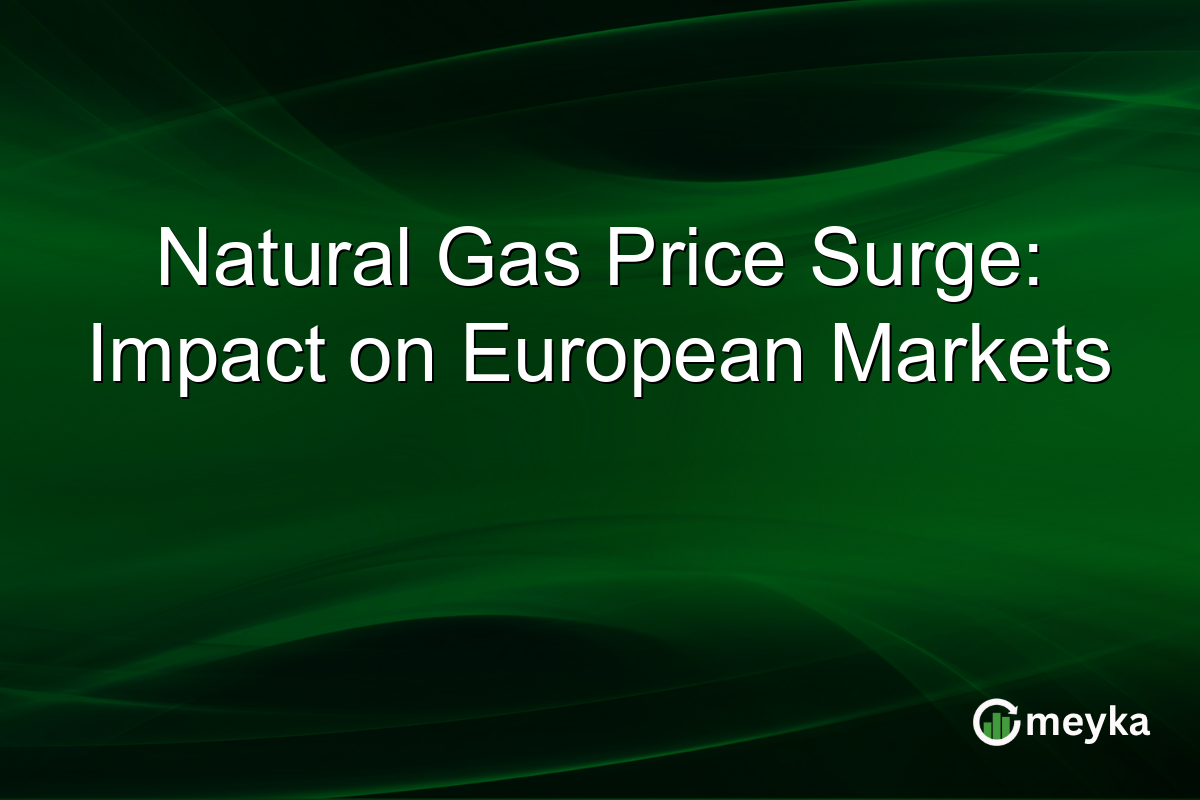Natural Gas Price Surge: Impact on European Markets
The natural gas price increase has sent shockwaves through European markets. Tensions in geopolitics and supply disruptions have contributed to this price surge. As winter approaches, energy market trends are shifting, affecting both industries and households. Prices have seen significant hikes, prompting concerns over energy affordability and economic impacts. We’ll explore what this means for the European energy market and potential responses.
Impacts on Industries
The natural gas price increase is hitting industries across Europe hard. Energy-intensive sectors, like manufacturing and chemicals, face rising costs. This can reduce profit margins and competitiveness. European manufacturers may need to pass costs to consumers or cut production. Rising energy bills are especially burdensome for small and medium enterprises.
This pressure could push some companies to explore alternative energy sources. However, these solutions take time and investment to implement. The industrial sector’s response will be crucial for maintaining economic stability.
Geopolitical Factors Driving Prices
Geopolitical tensions are at the core of the natural gas price increase. Ongoing conflicts in major supplier regions have disrupted supply chains. Sanctions and diplomatic stand-offs contribute to price volatility. These geopolitical dynamics make Europe more vulnerable due to its reliance on external energy sources.
Efforts to diversify the European gas supply are ongoing. Investing in infrastructure and renewable energy are long-term strategies. In the short term, Europe faces high prices, prompting discussions on energy independence and security.
Energy Market Trends
Current energy market trends show a shift towards renewables and sustainability. However, the transition is slow and complex. Natural gas remains a critical component of the energy mix. Prices are expected to fluctuate as demand outpaces supply during peak periods.
Regulators may intervene to stabilize markets and protect consumers. This could include temporary price caps or subsidies. These measures aim to alleviate the immediate impact while longer-term solutions are developed. Monitoring these trends is essential for investors seeking opportunities in the energy sector.
Read more about recent market interventions.
Final Thoughts
The ongoing surge in natural gas prices presents a significant challenge for European markets. Industries and consumers face rising costs, influenced by geopolitical issues and supply chain disruptions. Short-term strategies may mitigate some impacts, but long-term changes in energy consumption and supply are necessary.
For investors, understanding energy market trends and the European gas supply’s future is key. Meyka offers real-time insights into these dynamics, helping investors navigate these uncertain times with data-driven analysis and predictive tools.
FAQs
The increase is due to geopolitical tensions and supply disruptions. Conflicts in key supplier regions and sanctions against certain nations have limited supply, driving up prices.
Industries face rising energy costs, which can reduce margins. Companies may pass costs to consumers or cut production. This affects the entire value chain and can influence economic growth.
Governments may implement price caps or subsidies to protect consumers. There are also efforts to invest in alternative energy sources to reduce dependency on imported gas.
While renewables are growing, they cannot fully meet current demand immediately. Infrastructure and technology need time to scale up, making them a long-term solution.
Meyka provides real-time insights and predictive analytics on market trends, helping investors understand and respond to changes in the energy sector effectively.
Disclaimer:
This is for information only, not financial advice. Always do your research.






